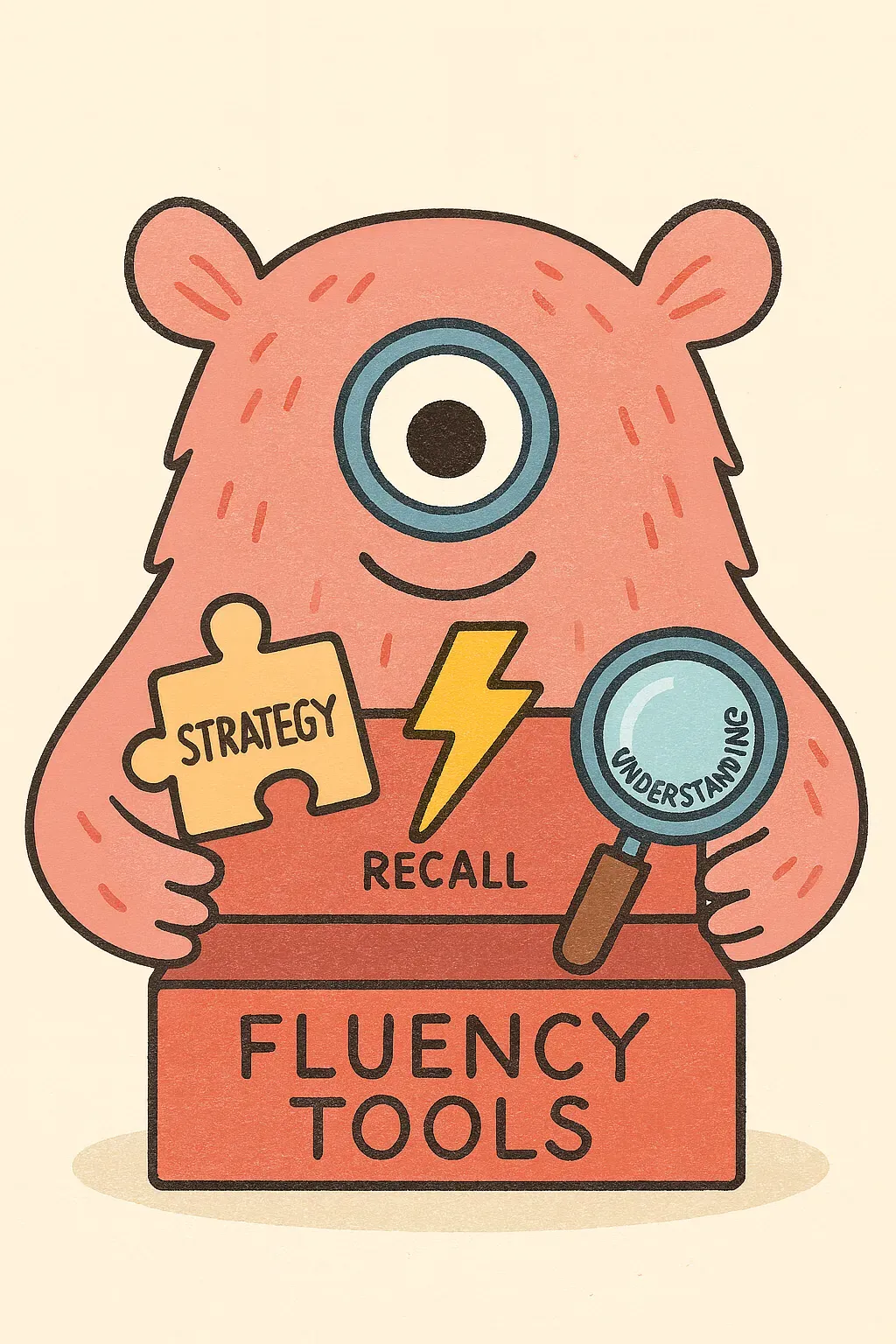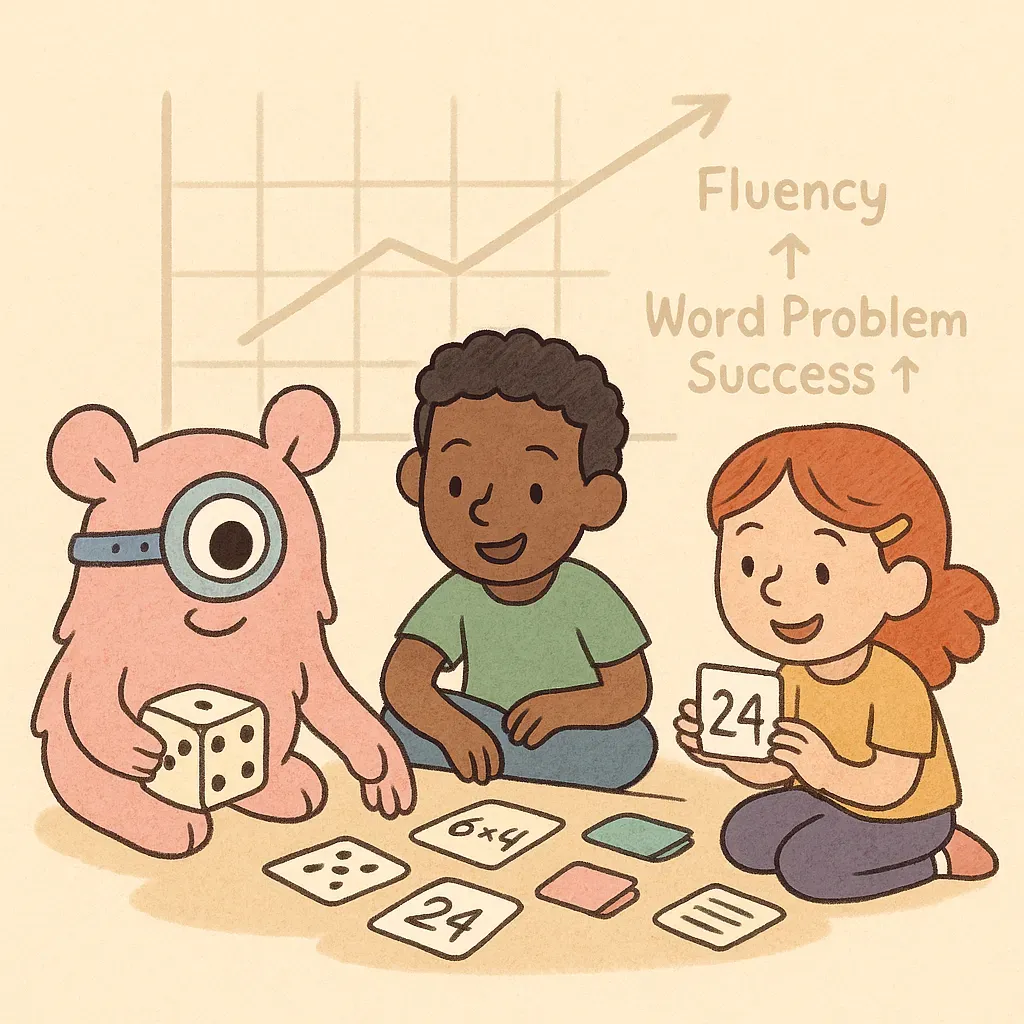Why Math Fact Fluency Makes Word Problems Easier (and Less Stressful)
TL;DR
- Math fact fluency involves quick, accurate recall and flexible strategies for basic operations, not just rote memorization.
- Research suggests it frees up cognitive resources, making word problems less overwhelming by allowing focus on understanding and strategy rather than basic calculations.
- For neurodivergent children, such as those with autism or ADHD, fluency may reduce anxiety and improve problem-solving accuracy, though individual approaches vary.
- Peer-reviewed studies indicate interventions building fluency lead to better performance in complex tasks like word problems.
- Parents and teachers can support fluency through games and targeted practice; check our related posts for tips.
As parents of elementary school children in the US, you've likely watched your child tackle math homework, only to see frustration build when word problems appear. These story-based questions, which require translating real-life scenarios into mathematical operations, can feel daunting. But what if building a strong foundation in math fact fluency could make them easier and less stressful? For families with neurodivergent kids - such as those with autism, ADHD, or learning disabilities - this foundation might be even more transformative. Teachers in neurodiverse classrooms can also benefit from understanding these connections to tailor their instruction.
In this post, we'll explore the evidence-based reasons why fluency with basic math facts (like addition, subtraction, multiplication, and division) supports success in word problems. We'll draw exclusively from peer-reviewed research, highlighting work by experts like Dr. Jennifer Bay-Williams, while incorporating insights for neurodivergent learners. Remember, every child learns differently, and these insights aim to empower you with reliable information.

What Is Math Fact Fluency, Really?
Math fact fluency goes beyond memorizing times tables or addition pairs. According to peer-reviewed definitions, it encompasses accuracy, efficiency, flexibility, and appropriate strategy use when recalling basic facts. For instance, in her article on fluency with basic addition, Dr. Jennifer Bay-Williams and co-author Gina Kling describe it as the ability to retrieve facts quickly while understanding underlying concepts, allowing children to choose strategies like decomposition (breaking numbers apart) or compensation (adjusting numbers for easier calculation).
A 2025 review in Psychological Science in the Public Interest echoes this, noting that arithmetic fluency develops through a blend of retrieval practice and conceptual strategies, progressing from implicit counting to explicit knowledge. This fluency isn't about speed alone; it's about freeing mental energy for higher-level thinking. For elementary kids, mastering facts up to 20 in addition and subtraction, and single-digit multiplication, sets the stage for more complex math.
Why does this matter for parents? If your child struggles with neurodivergence, traditional memorization might heighten stress. Instead, research-supported approaches, like those in Bay-Williams' work on assessing basic fact fluency, emphasize games and assessments that build understanding without pressure.
How Math Fact Fluency Eases the Path to Word Problems
Word problems require multiple skills: reading comprehension, identifying relevant information, and applying operations. Without fluent math facts, children often get stuck on basic calculations, leading to cognitive overload and stress. A 2019 study in Frontiers in Psychology found strong correlations between arithmetic fact fluency and performance on multi-step problems in elementary students, suggesting that fluent recall allows better focus on problem structure.
Dr. Bay-Williams' research reinforces this. In her co-authored piece on assessing fluency, she highlights how flexible strategies help students adapt facts to new contexts, such as word problems involving change or comparison. For example, knowing 8 + 7 = 15 flexibly might help a child solve "If you have 8 apples and need 15, how many more?" without recounting.
Further evidence comes from a 2019 intervention study in Exceptional Children, where third-graders with math difficulties improved word-problem labeling and irrelevant information identification after fluency-building activities. The intervention included brief math fact practice (in addition to other interventions), showing modest links to overall problem-solving gains.
A 2021 capstone project argues that automaticity reduces cognitive load, enabling students to tackle word problems with less frustration. As one quote notes, "If a child is instantly able to recall 4 x 8 is 32, they are able to use that answer to find a common denominator, for example." This efficiency turns stressful sessions into confident ones.
Reducing Stress: The Cognitive and Emotional Benefits
Stress in math often stems from working memory demands. A comprehensive review explains that fluent fact retrieval frees working memory for comprehension and planning in word problems. Experiments cited, like those by Fuchs et al. (2009), showed first-graders improving in word problems after fluency interventions, with effect sizes indicating meaningful reductions in effort.
For parents, this means less homework battles. When facts are fluent, kids spend energy understanding the story— "What is the question asking?"—rather than laboring over 7 + 9. Longitudinal data from a 2016 study in Assessment for Effective Intervention found fluency growth predicting overall math proficiency, including problem-solving, across grades 4-8.
Special Considerations for Neurodivergent Children
Neurodivergent kids, including those with autism or ADHD, may face unique challenges in math, such as executive function deficits or sensory sensitivities. Research suggests fluency can help. A 2024 study in Developmental Cognitive Neuroscience found children with co-occurring reading and math difficulties exhibit consistent fluency deficits, impacting word problems. Building fluency through tailored interventions could mitigate this.
For teachers in neurodiverse classrooms, a 2022 ERIC report on modified schema-based instruction recommends using manipulatives even for fluent students to build conceptual links, reducing stress for those with ID or autism.
A thesis on improving fluency for students with learning disabilities (2023) notes that deficits hinder higher skills like word problems, but interventions like flashcards show promise, though more time is needed for neurodivergent learners. Dr. Bay-Williams' emphasis on flexible assessment in her 2014 article supports adapting for diverse needs, avoiding timed tests that may exacerbate anxiety.
For practical tips for kids with autism, see our post on math fact fluency for kids with autism.
Evidence from Interventions: What Works?
Peer-reviewed interventions link fluency to word problem success. A 2020 thesis reviewed tiered math supports, finding fluency-building enhances problem-solving for struggling students. Another 2023 meta-analysis showed fluency interventions more effective than acquisition ones for basic skills, with implications for word problems.
Bay-Williams' 2011 article advocates games for fluency, which a 2023 study in Psychology in the Schools confirmed improves multiplication facts, aiding complex tasks.
Explore other articles for related strategies: how schema-based instruction helps kids solve word problems and why autistic kids may struggle with word problems and how to help.
Practical Tips for Parents and Teachers
Start with assessment: Use tools from Bay-Williams' work to gauge fluency without stress. Incorporate games like those in her book, or digital games like Monster Math, focusing on strategies over speed.
For neurodivergent kids, adapt with visuals or tech, as suggested in a 2019 study on computer-assisted interventions for word problems in students with disabilities.

Comparison of Fluency Approaches Based on Research
Approach | Benefits for Word Problems | Evidence Source |
|---|---|---|
Strategy-Based (e.g., decomposition) | Enhances flexibility for multi-step problems | |
Retrieval Practice | Reduces cognitive load, improves accuracy | |
Game-Based | Builds engagement, aids neurodivergent learners |
This table summarizes key approaches, showing how they support word problem ease.
FAQ
What if my child hates timed tests?
Research, including Bay-Williams' assessments, shows timed tests can increase anxiety without building true fluency. Opt for untimed strategy practice instead.
How does fluency help with math anxiety in neurodivergent kids?
By reducing working memory demands, as per 2024 neurocognitive studies, fluency allows focus on enjoyable aspects, potentially lowering stress.
At what age should kids achieve fluency?
By end of second grade for addition/subtraction, per standards, but individual pacing is key, especially for neurodivergent learners.
Can apps help build fluency?
Yes, if they emphasize strategies over rote, like Monster Math does; combine with real-world practice for word problem transfer.
What's the link between reading and math fluency?
A 2019 study shows shared cognitive roots; supporting both can boost word problem success.
References
- Bay-Williams, J. M., & Kling, G. (2014). Assessing Basic Fact Fluency. Teaching Children Mathematics, 20(8), 488-497. Link
- Kling, G. (2011). Fluency with Basic Addition. Teaching Children Mathematics, 18(2), 80-88. Link
- McNeil, N. M., et al. (2025). What the Science of Learning Teaches Us About Arithmetic Fluency. Psychological Science in the Public Interest. Link
- Donlan, C., et al. (2019). The Relationship Between Reading Fluency and Arithmetic Fact Fluency. Frontiers in Psychology. Link
- Browder, D. M., et al. (2019). Effects of a Word-Problem Intervention. Exceptional Children. Link
- Olson, J. (2021). The Importance of Math Fact Automaticity. Hamline University Digital Commons. Link
- Nelson, P. M., et al. (2016). The Relative Value of Growth in Math Fact Skills. Assessment for Effective Intervention. Link
- Ashkenazi, S., et al. (2024). Neurocognitive Mechanisms of Co-occurring Math Difficulties. Developmental Cognitive Neuroscience. Link
- Spooner, F., et al. (2022). Teaching Word Problem Solving to Students With Autism and Intellectual Disability. ERIC. Link
- Wall, C. (2023). Improving Fact Fluency for Students with Learning Disabilities. Northwestern College Digital Commons. Link

